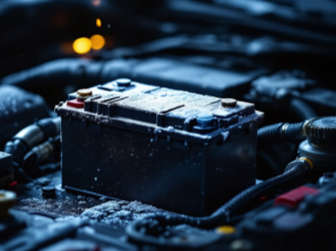At some point, to avoid mechanical breakdowns and electrical failures, you'll need to replace certain car parts after reaching a specific period or mileage. Even if your car’s gone in for regular servicing and maintenance, some parts will only last so long.
Car parts you didn’t know you had to replace
Your vehicle consists of many components that work in sync with one another. However, while one part may last a long time, another may fail at the same time, affecting your car’s overall performance. Cars undergo daily wear and tear, attributed to factors that include road conditions, service records, and driving habits. Even with regular servicing and maintenance, you may not be aware that certain parts need to be replaced or when they should be replaced.
Replacing car parts when they are worn out or damaged can save you money in the long run by preventing larger, costlier repairs and improving overall vehicle efficiency. Here are some reasons why:
1. Preventing Further Damage
When critical parts like brakes, tires, belts, or filters are not replaced on time, they can lead to more extensive damage to other components. For example, a worn-out timing belt can cause severe engine damage if it breaks while driving, leading to expensive repairs that could have been avoided by replacing the belt earlier.
2. Improved Fuel Efficiency
Certain parts, such as air filters, spark plugs, or oxygen sensors, directly affect your car’s fuel consumption. Replacing them when necessary ensures the engine runs smoothly and efficiently, which can reduce fuel costs over time. For instance, a clogged air filter can decrease fuel efficiency by up to 10%.
Avoiding Emergency Repairs
Waiting until a part fails completely often results in more costly emergency repairs. Emergency towing and unplanned labor costs can be far more expensive than regular maintenance and part replacement.
4. Maintaining Resale Value
A vehicle with properly maintained and replaced parts will generally have a higher resale value. Potential buyers or trade-in evaluators are more likely to offer a better price for a car that has been well-maintained, saving you money when you sell or trade in the vehicle.
5. Extending the Life of Your Car
Regularly replacing worn-out parts helps extend the overall lifespan of your car. Investing in timely maintenance can help you avoid the cost of buying a new vehicle prematurely, ultimately saving you a significant amount of money.
What are the most commonly replaced car parts?
Shock absorbers
When you travel over a speed bump or pothole, your car’s shock absorbers compress to absorb the impact, softening the landing for a more comfortable ride. They also play a role in preventing excessive wear on other components. You can tell if they are starting to wear out by observing signs such as excessive bouncing, longer braking distances, and clunking sounds, to name a few.
Shock absorbers typically last between three and five years.
Cambelt
Also known as the timing belt, the cambelt maintains the timing between the engine’s pistons and valves, which is essential for engine performance. If your engine won’t start, you hear rattling or knocking sounds, experience engine misfiring, or notice a loss of power, among other signs, it’s time to find a mechanic.
A functioning cambelt is normally replaced when a vehicle has reached 100,000 km and over.
Starter motor
A starter motor is what gives your engine the kickstart it needs to turn on. When you turn the key or press the start button, the starter motor jumps into action. Once the engine is running, the starter motor turns off.
It’s time to replace the starter motor if you notice abnormal clicking sounds when you turn the key, hear grinding noises, experience intermittent starting issues and/or a complete failure to start.
Car battery
Your car’s battery typically lasts between 3 to 5 years. Tell-tale signs of a dying battery include difficulty starting the car, dim headlights, flashing dashboard lights, or other electrical and mechanical issues.
A battery's lifespan is also affected by factors such as high to extreme temperatures, frequent short trips, and the age of the battery.
Brake Pads
Normally, brake pads can last a significant amount of time, but their overall lifespan will vary from driver to driver. You’ll know it’s time to replace the brake pads if you hear excessive squeaking or squealing, grinding when braking, vibrations in the brake pedal, and reduced braking performance, i.e., longer response time.
Factors that also influence the wear and tear of your car’s brake pads include vehicle type, the type of brake pads, and driving habits.
Spark Plugs
Spark plugs typically need to be replaced every 50,000 km, but the interval may vary depending on the car’s manufacturer, driving habits, and the type of spark plug. They are usually replaced and maintained as part of a comprehensive service plan.
You’ll need to have a spark plug replaced if you notice: an unstable or vibrating engine while idling, poor acceleration, difficulty starting the engine, a drop in fuel efficiency, or the age of the spark plug.
Car assistance and Car Warranty
In summary, while replacing car parts may seem like an expense at the time, it will save you money in the long run by preventing further damage, improving efficiency, and ensuring the longevity of your vehicle.
Car assistance, such as an Extended Car Warranty, can help you avoid hefty repair bills in the event of a mechanical breakdown. In addition to covering necessary repairs and replacements, and depending on the provider, some plans also offer roadside support. These additional benefits can provide peace of mind when you're stranded or dealing with unexpected vehicle issues, ensuring you're supported when you need it most.
if you’re in the market for affordable long-term upkeep for your wheels, Investing in a Comprehensive Service Plan can help prevent premature repairs and replacements of your car parts.
New Nissan Magnite Facelift Revealed
Meet the new Mitsubishi Triton Bakkie


